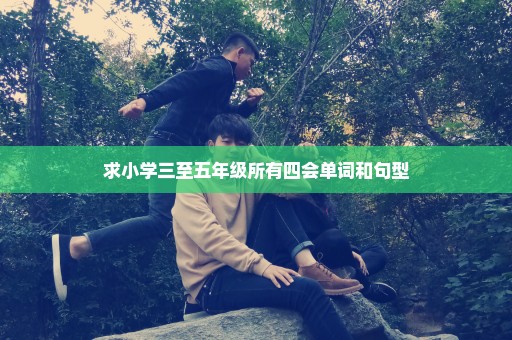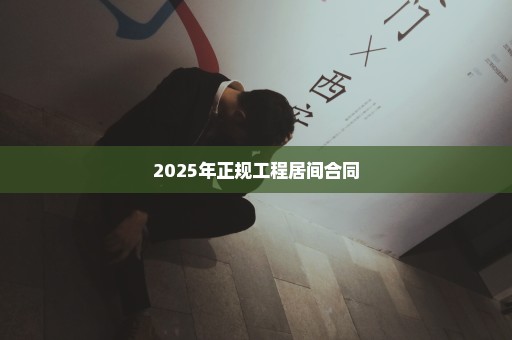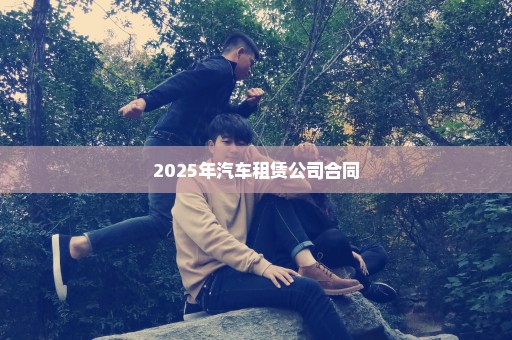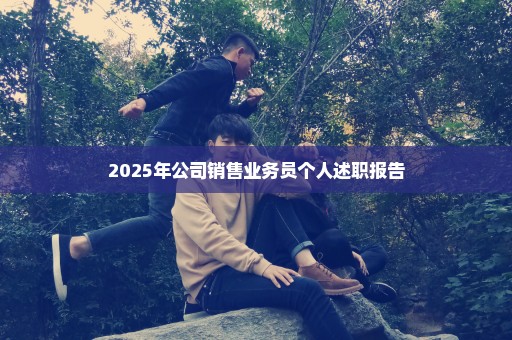求小学三至五年级所有四会单词和句型
小学一至五年级英语单词及主要句型
Vocabulary and Expression
Book 1
(注:黑体单词要求学生能听、说、认读;白体单词只作听、说要求。)
A a afternoon and are arm
B bag ball balloon bear bird birthday black blue boat body book bread brown bye
C cake can car cat chicken coffee Coke crayon
D dog doll duck
E
ear eat eight elephant eraser eye
F
face fine finger five foot for four French fries friend
G
gift go good goodbye great green
H
hamburger hand happy have head hello hi hot dog how how many how old
I
I’m=I am is it
J
juice
K
kite
L
leg let’s=let us like look at
M
may me meet milk monkey morning mouse mouth mom my
N
name nice nine no nose
O
OK one orange
P
paint panda pen pencil pencil-case pig pink plane purple
R
rabbit really red ruler
S
school seven sharpener six some squirrel super sure
T
tea ten thank thanks the this three to too two
W
water what white
Y
yellow your
Z
zoo
Book 2
(注:黑体单词要求学生能听、说、认读;白体单词只作听、说要求。)
A
again A.M.(a.m.) America and animal ant apple at
B
back banana beautiful big bike box boy brother bus
C
can CAN certainly chair children class come in come on cute
D
dad deer desk don’t = do not draw
E
egg eighteen eleven excuse my
F
family father feed fifteen fish fly fourteen fox friend from fruit funny
G
game giraffe girl good afternoon goodbye good morning goose grandfather grandma grandmother grandpa grape great guess
H
has he here here you are hmm how how many hungry
I
Ice ice-cream I’m = I am in
J
jeep jump
K
Kangaroo key
L
lamp let = let us like lion lock long look at look out lovely
M
man meet Miss mom more mother Mr my
N
nest new nice night nineteen no problem
O
oh on open orange
P
peach pear picture play p;ease P.M. PRC
Q
queen quiet
R
rain rainbow really right
S
see seventeen she short sister sixteen small snake so some sorry strawberry student
T
tail tall taste taxi teacher thanks that them thirteen this tiger today too toy TV twelve twenty
U
UK unbrella under USA use
V
vest very much violin
W
walkman watch watch out watermelon we welcome where who’s = who is wind window woman wow
Y
yeah yes you your yo-yo
Z
zebra zoo
Book 3
(注:黑体字为各单元中 Let’s learn部分出现的单词,要求听、说、认读;白体字为单元中首次出现的单词,只作听、说要求;标有下划线的单词要求学生听、说、读、写。)
A
all right aren’t = are not aunt
B
baby bag baseball player bathroom bed bedroom beef board book boy bread brother
C
chair chicken Chinese Chinese book chopstick(s) classmate classroom clean colour come computer computer game
D
desk dinner doctor door driver
E
egg English book
F
family fan farmer fat father fifty fish floor food for fork forty forty-one fridge friend friend(s)
G
gee girl go good idea good job
H
has have have a look he heavy help her here here you are he’s = he is hey his home hungry
I
I’d like = I would like in isn’t = is not it’s = it is
K
key kitchen knife
L
light like living room long hair look look at
M
many math book may me member milk mother music
N
name near new noodle(s) no notebook nurse
O
on only open our
P
painting parents pass pen pencil pencil-case people phone photo picture plate puppy
Q
quiet
R
ready rice right room ruler
S
school schoolbag science seat see she she’s = she is shelf short hair show sister sofa sorry soup spoon sports story-book strong student study sure
T
table teacher teacher’s desk thank you the they they’re = they are thin thirty thirty thirty-one too many try twenty- one
U
use uncle
V
vegetable
W
wait wall water what what’s = what is we where who window
Y
you young you’re = you are yummy
Book 4
(注:黑体字为各单元中 Let’s learn部分出现的单词,要求听、说、认读;白体字为单元中首次出现的单词,只作听、说要求;标有下划线的单词要求学生听、说、读、写。)
A
all right a pair of apple are aren’t = are not art room assistant at
B
banana beautiful big blue board boots breakfast but bye
C
can can’t = can not canteen carrot cat cheap Chinese class close cloudy cold colour colourful computer computer room cool cow cucumber
D
dog dinner donkey dress duck
E
eight eleven English English class expensive
F
fan farm farmer fat fifteen first five floor for football four fresh
G
garden get up go home go to bed go to school go to the playgroud goat green gym
H
have to hello help hen hi horse hot how many how much hundred hurry
I
I is it it’s = it is
J

jacket jeans just a minute
K
kid
L
lamb let’s = let us library light long lunch
M
many math matter music music class music room my
N
nighbour New York nine ninety-nine no not not much now
O
…o’clock one onion orange our over
P
pair pants P.E. pear P.E.class picture pig play playground please potato pretty put on
R
rabbit rainy ready red run
S
sandals schoolbag second seven seventy sheep shirt shoes short shorts six sixty size skirt slippers small sneakers snowy so socks son sunny sweater
T
take teacher’s desk teacher’s office that that’s = that is ten them there these they they’re = they are thirteen this this way those three time to today tomato T-shirt TV room twelve twenty two
V
visitor
W
wall want warm washroom watch TV watermelon wear weather weather report welcome we’ll = we will what what for white whose windy
Y
yellow yes you your
Book 5
A
☆active air ☆air-conditioner any at home
B
bathroom ☆bedroom ☆behind ☆bridge ☆building ☆but
C
cabbage △Canada ☆can’t =can not city ☆clean clean the bedroom ☆closet ☆clothes cloud ☆cook the meals ☆curtain
D
☆day ☆do homework △do housework ☆don’t= do not ☆do the dishes
E
△eat ☆eggplant empty the trash ☆end table
F
△farm ☆favourite ☆fish flat ☆flower ☆for ☆forest ☆fresh ☆Friday(Fri.) △from
☆fruit fun ☆funny
G
grape ☆grass ☆green beans
H
☆have have a try △have to healthy helpful ☆he’s = he is holiday ☆house
I
△I’d like = I would like I’d like to = I would like to ill ☆in in front of
J
just do it
K
☆kind ☆kitchen ☆know
L
lady ☆lake ☆like l☆iving room look at love ☆lunch
M
☆make the bed menu Mew Mew ☆mirror △Miss ☆Mr
☆Monday(Mon.) Moral Education mountain mutton
N
nature park ☆near now
O
often ☆old ☆on over own
P
park ☆path ☆picture play chess △play computer games pork ☆potato principal put away
the clothes
Q
quiet
R
☆read books ☆river ☆road robot run
S
salty ☆Saturday (Sat.) ☆set the table ☆she’s = she is ☆short sky ☆smart Social Studies so much sound ☆sour ☆strict ☆strong ☆Sunday(Sun.) ☆sweep the floor ☆sweet
T
☆tall ☆tasty tell ☆they’re = they are ☆thin third ☆tofu
☆Thursday(Thu.) ☆tomato tomorrow ☆too ☆trash bin ☆tree ☆Tuesday(Tue.)
U
☆under university student ☆use a computer
V
☆very very much village
W
△wait ☆wash the clothes wash the windows ☆watch TV ☆we
☆water the flowers ☆Wednesday (Wed.) ☆What about…?
☆what’s=what is ☆who’s = who is with word
Y
△yeah ☆young
Book 6
(注:黑体字要求听、说、认读;白体字为各单元中首次出现的单词,只作听、说要求;标有△的单词为前五册学生用书中已经出现过的白体字,要求听、说认读;标有☆的单词要求学生听、说、读、写。)
A
able about always ☆answer ☆answer the phone ant ☆Apr. April ☆at ☆Aug. August
B
because ☆best ☆birthday ☆breakfast ☆butterfly
C
catch ☆catch the butterflies center chart ☆chess Children’s Center ☆clean the room ☆climb ☆climb the mountains climber ☆collect ☆collect the leaves ☆cook ☆cook dinner count ☆count insects cousin
D
☆date ☆Dec. December ☆dinner ☆do an experiment ☆drink ☆do morning exercises ☆draw ☆draw pictures ☆drink water
E
☆eat ☆eat dinner e-card eighth either ☆e-mail ☆evening everyone ☆exercise ☆experiment
F
☆fall ☆Feb. February fifth ☆fight first ☆fly ☆fly kites fourth
G
☆get ☆get up ☆go hiking ☆go shopping ☆grandpa ☆grandparent
H
Halloween △have a look ☆have a picnic ☆have English class her hike him hold hold on
☆honey
I
☆insect interesting
J
☆Jan. January ☆jump ☆July ☆June
K
☆kangaroo ☆kite
L
later leaf leave ☆letter ☆listen ☆listen to music
M
☆make ☆make a snowman ☆Mar. March ☆May mom mountain
N
next ninth ☆noon north ☆Nov. November
O
☆Oct. October ☆often over there
P
☆piano ☆pick ☆pick up leaves ☆picnic ☆plant ☆plant trees ☆play chess ☆play sports ☆play the piano play with policeman
R
rain ☆read ☆read a book ☆report ☆run
S
☆season second see you later send ☆Sept. September shop ☆skate ☆sleep snow ☆snowman speak speak to… ☆sometimes ☆sport ☆spring ☆study ☆summer ☆swim ☆swing
T
☆take ☆take pictures talk △tell Thanksgiving then thing third trunk twelfth twentieth
U
☆uncle up us ☆usually
V
☆visit ☆visit grandparents
0
☆why ☆walk ☆watch ☆watch insets ☆weekend ☆when ☆which ☆winter woods △work ☆write ☆write a letter
☆write a report ☆write an e-mail
词组: in front of在……前面inside(在)里面outsid(在外面near在above在……上方below在……下方beside在……旁边
表示人体器官的词:arm胳臂body身体ear耳朵elbow肘eye眼finger手指foot脚(复数为feet)hand手head头knee膝盖leg腿mouth嘴nose鼻子shoulder肩膀stomach胃;肚子toe脚趾(复数为toes
时态:
一般过去时:
肯定句:主语+动词的过去式+......
否定句:主语+did not+动词原形+.....
疑问句:Did+主语+动词原形+.....
进行式:主语+be动词+现在分词+......
一般将来式:
be going to+动词原形+......
主语+will/shall+动词原形+....
过去将来式:
主语+be(was、were)+动词原形+....
主语+would/should+动词原形+....
现在完成式:
主语+have/has+过去分词
过去完成式:
主语(所有人称)+had+过去分词+....
多背些例句更有用!!
1. I (She/He) can swim.
我(她/他)会游泳。
2. Can you (she/he/Danny) dive ? Yes, I (she/he) can. No, I (she/he) can’t.
你(她/他/ Danny)会跳水吗?是的,我(她/他)会的。不,我(她/他)不会。
3. How old are you? I’m ten years old.
你几岁了?我十岁了。
4. How old is she/he? She/He is eleven years old.
她/他几岁了?她/他十一岁了。
5. What’s your name? My name’s Alice.
你叫什么名字?我叫Alice.
6. What’s his name? His name’s Sam.
他叫什么名字?他叫Sam.
7. What’s her name? Her name’s Ginger.
她叫什么名字?她叫Ginger.
8. Is this your bicycle? Yes, it’s my bicycle. No, it isn’t my bicycle.
这是你的自行车吗?是的,它是我的自行车。不,它不是我的自行车。
9. What’s he? He’s an ambulance man.
他是干什么的?他是一个救护人员。
10. What’s she? She’s a policewoman.
她是干什么的?她是一个警察。
11. What does your mother do? She’s a waitress.
你的妈妈是干什么的?她是一个服务员。
12. What does your father do? He’s a bus-driver.
你的父亲是干什么的?他是一个公交车的司机。
13. Whose block is that? That’s Kitty’s block.
那是谁的大楼?那是Kitty的大楼。
14. Whose parrot is it? It’s Ben’s parrot.
它是谁的鹦鹉?它是Ben的鹦鹉。
15. How does he feel? He’s afraid.
他感觉怎样?他害怕了。
16. How does she feel? She’s thirsty.
她感觉怎样?她渴了。
17. I have a new friend. We have a cat. They have a dog.
我有个新朋友。我们有只猫。他们有条狗。
18. He has a skateboard. She has a kite. It has a bell.
他有一块滑板。她有一只风筝。它有一只铃。
19. How many hoops? There are three hoops.
有多少只呼拉圈?有三只呼拉圈。
20. What have you got? We’ve got some chocolate.
你们有什么?我们有一些巧克力。
21. Where is the bird? It’s in the aviary.
鸟在哪里?它在鸟舍里。
22. Where are the flowers? They’re in the plant house.
花朵在哪里?它们在暖房里。
23. Where is Alice? She’s on a swing.
Alice在哪里?她在秋千上。
24. Where is Eddie? He’s under the tree.
Eddie在哪里?他在树底下。
25. Don’t chase the hens. Close the gate.
不要追赶母鸡。关上大门。
26. How much is it? Twelve yuan.
它多少钱?十二元。
27. Here’s some corn.
这儿是一些谷物(玉米)。
28. I’m sorry. That’s all right.
对不起。没关系。
29. What do frogs like? They like moths.
青蛙喜欢什么?它们喜欢飞蛾。
30. Look at the plant. Its stalk is long.
看着这棵植物。它的茎是长的。
31. Look at the tree. Its branches are short.
看看这棵树。它的枝干是短的。
32. You can play football in the playground.
你们可以在操场上踢足球。
固定句型:1 What's you name? My name's ...
2 What's this ? This is...
3 What's that? That is...
4 What are these? They're...
5 What are those? They're...
6 What color is it? It's...
7 What colr are they? They're...
8 How many birds are there? There are...
9 How much is it? It's...
10 How much are they? They're...
11 Who's he? He's
12Who's she? She's...
13 Whose book is it ? It's ...
14 Whose CDs are they? They're...
英语五种基本句型
基本句型一: 主+系+表
此句型的句子有一个共同的特点:句子谓语动词都不能表达一个完整的意思,必须加上一个表明主语身份或状态的表语构成复合谓语,才能表达完整的意思.这类动词叫做连系动词.系动词分两类:be, look, keep, seem等属一类,表示情况;get, grow, become, turn等属另一类,表示变化.be 本身没有什么意义,只起连系主语和表语的作用.其它系动词仍保持其部分词义.
1. This │is │an English-Chinese dictionary. 这是本英汉辞典.
2. The dinner │smells │good. 午餐的气味很好.
3. His face │turned │red. 他的脸红了
4. Everything │looks │different. 一切看来都不同了.
5. He │is growing │tall and strong. 他长得又高又壮.
基本句型二: 主+谓(不及物动词)
此句型的句子有一个共同特点,即句子的谓语动词都能表达完整的意思.这类动词叫做不及物动词,后面可以跟副词,介词短语,状语从句等.
1. The sun │was shining. 太阳在照耀着.
2. The moon │rose. 月亮升起了.
3. What he said │does not matter. 他所讲的没有什么关系.
4. They │talked for half an hour. 他们谈了半个小时.
5. The pen │writes smoothly. 这支笔书写流利.
基本句型三: 主+谓(及物)+宾
此句型句子的共同特点是:谓语动词都具有实义,都是主语产生的动作,但不能表达完整的意思,必须跟有一个宾语,即动作的承受者,才能使意思完整.这类动词叫做及物动词.
1. Who │knows │the answer? 谁知道答案?
2. He │enjoys │reading. 他喜欢看书.
3. He │admits │that he was mistaken. 他承认犯了错误.
基本句型四: 主+谓(及物)+双宾(间宾+直宾)
此句型的句子有一个共同特点:谓语动词必须跟有两个宾语才能表达完整的意思.这两个宾语一个是动作的直接承受者,另一个是动作的间接承受者.通常这一间接承受者用一个介词来连接,当动作的间接承受者在动作的直接承受者之前时,这一介词往往被省略.
1. She │ordered │herself │a new dress. 她给自己定了一套新衣裳.
2. I │showed │him │my pictures. 我给他看我的照片.
3. He │bought │you │a dictionary.他给你买了一本字典.
4. I │told │him │that the bus was late. 我告诉他汽车晚点了.
5. He │showed │me │how to run the machine. 他教我开机器.
基本句型五: 主+谓(及物)+复合宾语(宾+宾补)
此句型的句子的共同特点是:动词虽然是及物动词,但是只跟一个宾语还不能表达完整的意思,必须加上一个补充成分来补足宾语,才能使意思完整.
1. They │painted │the door │green. 他们把门漆成绿色.
2. They │found │the house │deserted. 他们发现那房子无人居住.
3. What │makes │him │think so? 他怎么会这样想?.
4. We │saw │him │out. 我们送他出去.
5. He │asked │me │to come back soon. 他要我早点回来.
6. I │saw │them │getting on the bus at that time. 我看见他们当时在上了那辆公共汽车.
一般疑问句, 就是将一般疑问词提到句首。
没有一般疑问词(am is are)就加上助动词(be, do, have)放在句首。然后句子中间注意要改变的地方。
基本助动词只有三个:be, do, have, 他们没有词汇意义,只有语法作用,如协助构成进行体,完成体,被动态,否定句,疑问句等。
比如说,如果是一句以第三人称来写的陈述句,一些动词后面会加上es。(单数第三人称形式)
如果要改成一般疑问句, 句子里面又必须将助动词does(第三人称单数)放在句首作一般疑问句的话,那改变的时候,动词后面就必须去es(用动词原形)。
然后就是some和any的事情,
陈述句用some,一般疑问句用any。
但是一小部分一般疑问句里面, 看到some, 一般疑问句也是要改some的。
在这句句子是……
比如说想要什么东西,一般疑问句里面就要用some。
还有一种是特殊疑问句,题目一般是划线提问。
根据划线的词语选用特殊疑问词,放在句首,进行提问。
特殊疑问词一般是w或wh开头的。
如:
what (什么)\how\ who(谁)\ how many(多少) \how much (多少钱)\what colour\ how old\which(哪一个)\why……等等……
一、 肯定句改否定句的方法——一步法
1、 在be动词后加not。如:is not , are not , am not, was not, were not;
2、 在can,should, will等后加not。如:cannot, should not, will not;
3、 上述都没有的,在动词前加助动词否定形式don’t/doesn’t/didn’t。
4、 some 改成any。
二、 肯定句改一般疑问句的方法——三步法
1、 把be动词放在句首,剩下的照抄,(some 改成any,my改成your等)句点改成问号。
2、 把can,shall, will等放到句首,剩下的照抄,(some 改成any,my改成your等)句点改成问号。
3、 上述都没有的,在句首请助动词Do/Does/Did帮忙,剩下的照抄,(some 改成any,my改成your等)句点改成问号。
三、 肯定句改特殊疑问句的方法——四步法
1、在一般疑问句的基础上,句首添加一个疑问词即可,可根据划线部分确定是什么疑问词。
2、接着找be动词或can,shall, will等放在疑问词后面,若没有则请助动词do/does/did帮忙,写在疑问词后面,how many除外,必须先写物品,再写be动词等。
3、划线部分去掉后剩下的内容照抄,(some 改成any,my改成your等)
4、句点改成问号。
越过"动词填空"这道关
一、"动词填空"题的命题特点 何为"动词的适当形式"呢?就单个行为动词来说,它涉及到动词的时态、主谓一致(通常有什么样的主语形式并决定了什么样的谓语动词形式即动词的单复数形式与人称的变化)、非谓语动词(如doing或to do形式)、常用句型和习惯表达(即英语中约定俗成的表达)等。它主要考查内容如下: 1.动词的谓语形式:动词时态(如一般现在时、现在进行时等,其中涉及到原形动词、动词的人称及数的变化,特别是"三单形式"、动词的"be+V-ing"形式等。) 2.动词的非谓语形式:不定式(如 do/to do)、V-ing等。 3.动词的其他类转化形式:动词→名词(如work→worker;build→build- ing)、动词→形容词(如worry→worried; break→broken)等。 二、"动词填空"题的解题秘诀 "动词填空"题的解题秘诀可归纳为:首先,确定动词的考查类别:谓语形式、非谓语形式还是动词的其他类转化形式;其次,依据所考查的类别,选择动词的适当形式;最后,检查所填写的动词时态结构、非谓语形式是否正确,以及与其他词类的转化形式的拼写是否有误,是否符合题意要求等。为方便记忆,现将此解题秘诀归纳为口诀:动词填空不用愁,解题秘诀有三招:第一招,定类别;第二招,选形式;第三招,再检查。
例句: he likes play football
①没有be动词 用DOES ,does后面要原型
一般现在时与现在进行时
一般现在时和现在进行时是初一阶段所学的两种重要时态,现从以下三个方面对其进行对比,以便更好的掌握它们的用法。
鹏仔微信 15129739599 鹏仔QQ344225443 鹏仔前端 pjxi.com 共享博客 sharedbk.com
图片声明:本站部分配图来自网络。本站只作为美观性配图使用,无任何非法侵犯第三方意图,一切解释权归图片著作权方,本站不承担任何责任。如有恶意碰瓷者,必当奉陪到底严惩不贷!
 百科狗
百科狗



